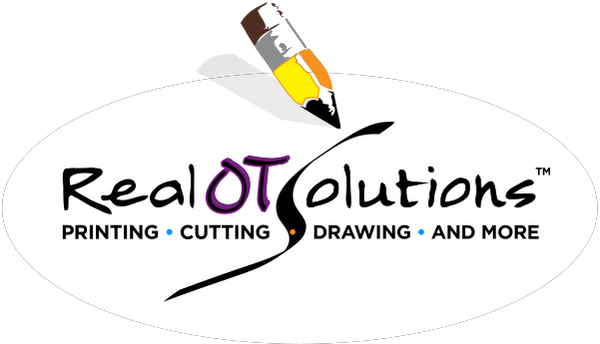- Handwriting has long been considered an essential skill that helps young children develop their basic motor functions and critical thinking.
- Unfortunately, writing by hand seems to be taking a back seat to digital technology, replaced by keyboard and typing skills.
- Will these changes have repercussions on the cognitive and motor development of young people in the future?
- Real OT Solutions® breaks down how handwriting can help in so many essential areas of development, including academic achievement.
Writing & Literacy
Handwriting is a fundamental skill, but it is often overshadowed by the advancements of digital technology. However, research has revealed a surprising link between handwriting proficiency and overall academic success. At Real OT Solutions®, we aim to explain the correlation between handwriting skills and academic achievement, demonstrating that writing and literacy are closely intertwined.
Follow along as we review why handwriting is so important for students, explain the reading-writing connection, and suggest ways to improve handwriting.
The Research Behind Writing
The reading-writing connection is backed by studies that demonstrate the positive relationship between writing and literacy, language development, and overall academic performance. Additionally, these studies provide strategies for parents, therapists, and teachers to support children's handwriting lessons, ultimately helping the children excel academically. In fact, MRI studies show increased neurologic activity in the reading centers as well as increased communication between both sides of the brain when pencil is put to paper. This is the genesis of memory, learning, problem-solving, creativity, and more.
Why Handwriting Is Important for Students
Numerous studies have shown a strong connection between handwriting skills and literacy development. Handwriting practice workbooks and tools help students recognize and remember letters and words more effectively. Furthermore, the act of physically writing by hand supports the development of phonemic awareness, spelling, and reading comprehension skills. Children who possess well-developed handwriting skills tend to have stronger literacy skills, which are essential for academic success across all subjects.
Handwriting also plays a crucial role in language development. The act of writing by hand helps children understand the structure of language, including grammar, syntax, and punctuation. When children write, they actively engage with language, allowing them to internalize and utilize vocabulary more effectively. Handwriting provides a platform for children to express their thoughts and ideas, fostering their ability to communicate and articulate complex concepts.
Ways to Improve Handwriting

Now that we’ve discussed the link between academic success, writing, and literacy, it’s time to remind the decision-makers at your school that handwriting is essential to improving academic performance. Practicing handwriting for kids improves their cognitive abilities, critical thinking, and problem-solving skills.
So, how can you encourage a strong handwriting program in your school? Here are some helpful tips and strategies to support handwriting skills, along with the reading-writing connection:
- Start Early: Introduce writing and literacy activities from an early age. Encourage children to scribble, draw, and experiment with writing tools to develop hand-eye coordination and fine motor skills.
- Practice Regularly: Provide opportunities for children to practice handwriting regularly. Incorporate writing and literacy activities into their daily routine, such as writing letters, keeping a journal, or engaging in creative writing exercises.
- Provide Guidance: Teach children proper letter formation, pencil grip, and posture. Demonstrate the correct techniques and encourage them to practice consistently. Offer constructive feedback and positive reinforcement to help them improve their handwriting skills.
- Use Engaging Resources: Utilize engaging resources, such as special handwriting practice paper, tracing activities, handwriting workbooks, scissor practice sheets, and handwriting apps, to make handwriting practice enjoyable for children. Incorporate games that promote handwriting skills.
- Integrate Handwriting Across Subjects: Encourage the integration of writing and literacy into various subjects. Assign written assignments, encourage note-taking by hand, and provide opportunities for handwritten presentations or projects.
Once you understand why handwriting is important for students, you can more easily integrate handwriting practice into your curriculum. You’ll quickly realize that kids who practice handwriting exhibit better organization and structure in their written work, leading to clearer and more coherent communication.
Success for Occupational Therapists & Teachers
As occupational therapists are aware, the link between academic success, writing, and literacy highlights the significance of handwriting skills in children's overall development. It is essential to emphasize that handwriting proficiency has a positive impact on literacy, language development, and academic performance across various subjects.
By providing support and ways to improve handwriting skills, parents and teachers can empower children to excel academically. Recognize the valuable role that handwriting plays in fostering academic achievement and equip children with this fundamental skill for their future success!
Have questions about implementing a handwriting curriculum in your school or teaching handwriting as a parent? Reach out to our team to learn more!


